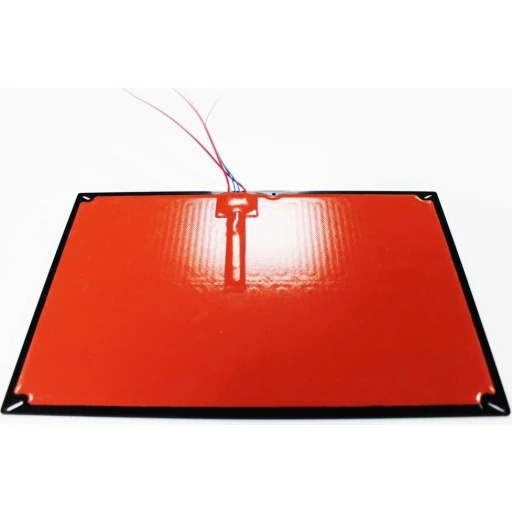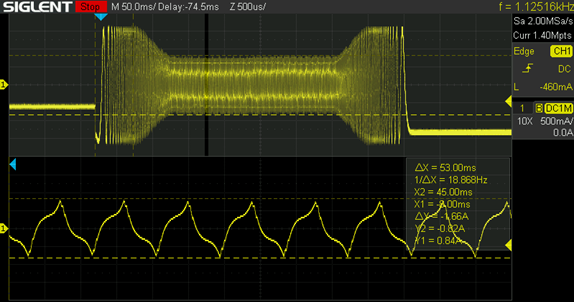One of the most important and expensive parts of any 3D printer is the power supply. Living between the wall outlet (AC power) and the rest of the machine (generally DC power), the power supply serves as the backbone of the entire electrical system inside any printer.
However, not every part of the printer is a large consumer of electricity. So what are the parts of the machine that require the most energy?
Heating Elements
Heating is an essential part of FDM printers, and the heating elements themselves are generally the largest consumers of power in the entire system. Within most printers, the two main heating subsystems are the following.
- Extruder Heater: The extruder’s heating element is responsible for warming the hot end to the correct temperature for melting the filament. Maintaining proper temperature here is crucial, as the element getting too cold or too hot can lead to print failures.
Generally, the extruder heater is a resistive element on the order of ohms. Drawing power based on Ohm’s law (P=IV), a standard extruder heater powered from 12V can easily draw upwards of 50W on its own. - Heated Bed: Many FDM printers come with a heated bed to ensure proper adhesion of the first layer and to minimize warping. These systems are often achieved through resistive heaters as well, such as PCB heaters or silicone heaters. With a much larger surface area than an extruder, the bed generally requires even more power to properly warm it to temperature.

A 3D printer heated bed with a silicon heater. Image courtesy of 3DJake.
Motors and Mechanical Components
After the heaters, the largest consumers of power in a 3D printer are often the mechanical components. In short, any part that moves will fit this classification, including the motors, and fans.
- Stepper Motors: The stepper motors in a printer serve to control the movement of the extruder and the build platform. Requiring specialized driving circuitry, stepper motors convert electrical energy into magnetic energy, which in turn is converted to the kinetic energy of the motor. The power draw of a stepper motor is largely determined by the load it is moving, and speed at which it moves. For this reason, the power consumption of a printer’s motors will depend on the motor’s function and the mechanical construction of the machine.
- Fans: Fans are used in 3D printers to transfer heat throughout the system. Whether that’s moving heat away from a recently extruded layer of material, circulating air within a heated chamber, or filtering particles through a HEPA filter, fans are a crucial aspect of these systems. Generally powered by DC, fans are often powered by voltages as high as 24V and can consume 1W or more of power. Since they run continuously during printing, they make a significant contribution to the overall power consumption.

Current waveforms of a 3D printer’s stepper motor. Image courtesy of Trinamic.
Electronics and Controllers
Last on our list is the electronics within the printer. Although most of the items discussed in this article can fall into that category, in this context, “electronics” refers to the processing, display, and control electronics within the system.
- Mainboard, Processors, and Microcontrollers: The mainboard, processors, and microcontrollers serve to manage all of the operations of the printer, including temperature control, movement, and user interface. Although they don’t consume as much power as heating elements or motors, they still contribute to overall energy usage.
- Display and User Interface: Touchscreens or LCD displays for user interaction also consume power. Within this, the backlight of an LCD display is generally the largest gobbler of electricity. Overall, the total contribution of the display is minimal as compared to the rest of this list.
Understanding the power consumption dynamics within an FDM 3D printer provides users with insight into just how electricity is used by a machine. Indeed, the heating elements, the motors, mechanical components, and the electronics and controllers are pivotal contributors to the overall energy use. The extruder heater and heated bed take the lion’s share, with stepper motors and fans not trailing far behind. While the power usage by mainboard, processors, microcontrollers, and the display interface is not as significant as the aforementioned components, it is nonetheless an integral part of the energy expenditure. As the technology advances, striking a balance between operational efficiency and power consumption will continue to be a critical task for engineers and designers in the additive manufacturing industry.
Feature image courtesy of Prusa Research.
Subscribe to Our Email Newsletter
Stay up-to-date on all the latest news from the 3D printing industry and receive information and offers from third party vendors.
You May Also Like
Precision at the Microscale: UK Researchers Advance Medical Devices with BMF’s 3D Printing Tech
University of Nottingham researchers are using Boston Micro Fabrication‘s (BMF) 3D printing technology to develop medical devices that improve compatibility with human tissue. Funded by a UK grant, this project...
GaeaStar and Verve Coffee Roasters Start Pilot Production of Sustainable 3D Printed Coffee Cups
Following a 2022 debut in Germany, GaeaStar, a startup based in San Francisco and Berlin, has begun US pilot production of its sustainable, disposable clay cups and bowls made with...
Meltio and Accufacture Unveil Robotic Metal 3D Printer Made in the US
Meltio has partnered with Michigan-based robotics firm Accufacture to introduce Alchemist 1, a robotic cell designed for wire-laser metal 3D printing made in the US. This new system represents a...
WASP Highlights Advances in Healthcare 3D Printing at Italy’s Exposanità 2024
WASP takes center stage at Italy’s leading healthcare expo, Exposanità 2024, demonstrating the transformative impact of its advanced 3D printing technologies on the medical sector. Known for its line of...
































